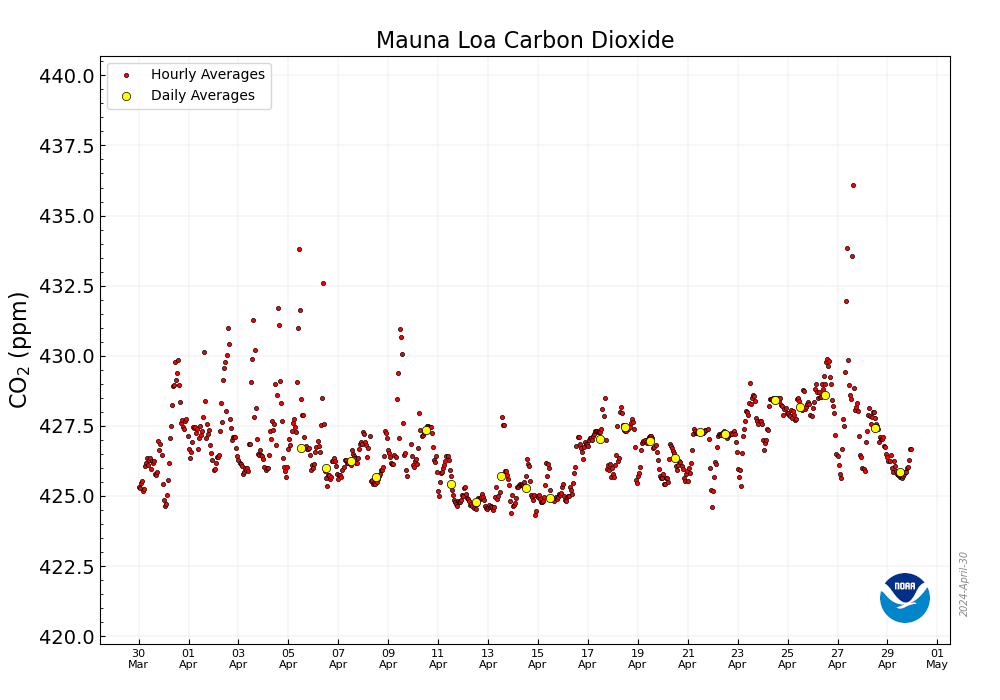The Earth has sent us another warning that the climate crisis is here and we’d best do something about it. The highest CO2 level on record happened on April 3, the shocking observation reached 421.21 ppm. On April 2, the concentration was 416.97 ppm.

Why this matters
Mauna Loa Observatory is located on the Big Island of Hawaii and it has been in operation since 1950, the oldest place measuring CO2 concentrations still in action. It’s far from the continental landmass and big cities, and nearly 3,400 m above sea level. This means almost nothing contaminates the data, apart from the volcano spurious data which scientists can easily eliminate.
If this observatory planted in the middle of the Pacific Ocean, far from any perturbance, has detected the highest amount of CO2 levels without any interference from its volcano, and after a ‘decline’ of human activity which happened in 2020 — this means we are in trouble.
Keeling curve
It’s important to note that one or two extreme values don’t necessarily mean much on their own. There are always exceptions. But these large CO2 values are not exceptions — quite the contrary: they are part of a well-observed phenomenon of CO2 rising in the atmosphere. Don’t believe me? Have a look at this chart:

In 1976, a team led by Charles Keeling published the first analysis of the evolution of CO2 concentration from the Mauna Loa observatory. The curve later became known as the Keeling curve.
The graph shows the increase in carbon dioxide year by year, the recent plot shows how this is even more significant compared to the ’70s. Inside the increasing trend, you see annual oscillations, they are the result of a natural response in the climate. Leaves fall during Autumn in the Northern Hemisphere, so the vegetation is less successful in retaining the CO2 in the air.
CO2 effects
Carbon dioxide is what’s called a greenhouse gas: it ‘stores’ energy that then heats up the air.
If the carbon dioxide increases, the temperature of the atmosphere (and subsequently, the entire planet’s surface) increases. The graph below shows the correlation in the trend, how temperature and concentrations are tightly coupled. But that is a simplistic point of view, the Earth is a complex system, so add temperature response with the other greenhouse gases, other interactions, and feedbacks happening at the same time.

It is a fact that the current record is one point of one single day in the curve, climatology requires years of observation. However, there is no doubt this a scary alert from the climate system, knowing the recent events: one of the hottest years, biomass less significant than human-made mass, shocking Hurricane season, deforestation records, fires records, all this in a small period of time.
Ultimately, it’s also important to put thigns into a historic context. Looking at the charts above, things seem normal. But things don’t seem normal at all when we include the past few centuries.

The fact that the main cause of this abrupt rise in the concentrations is obviously human, it was obvious for Keeling and Hansen back then, it seems ridiculous to ignore it now.






